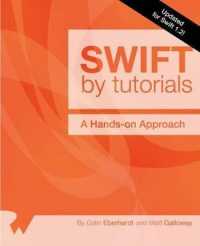- ホーム
- > 洋書
- > 英文書
- > History / World
Full Description
The late nineteenth-century city acted as a magnet for the poor of rural
Ireland, attracting them with the promise of employment and economic
independence. For many, however, urban life meant economic precarity,
marginalisation and destitution, with the workhouse as an all-too-present
reality. Young families were particularly vulnerable, with the result that thousands
of children found themselves confined within the workhouse walls.
This book explores the changing role of the Irish poor law in child
welfare in the late nineteenth- and early twentieth-century city. Taking as its
focus Belfast, a burgeoning industrial and port city at the heart of a global
trade network and a city deeply divided along political and confessional lines,
it examines the ways in which that city's poorest children and their families engaged
with the poor law and used the workhouse as part of their economy of
makeshifts. It examines the various spaces of the poor law - whether the
workhouse, the foster home, or the far reaches of empire - as sites of encounter
and engagement between welfare authorities and the city's poorest families, and
explores the development of child welfare practice at a time of increasing
state encroachment into the daily lives of poor children.
Contents
Introduction
1. The City and the Child
2. 'Keeping them out of the workhouse': Landscapes of Child Welfare in the City
3. Workhouse Child
4. Life in the Workhouse
5. Boarding Out
6. Lady Inspectors and Boarding Out Committees
7. Investigating the Children of the Poor
8. Knowing Poor Children: The Introduction of the History Sheet System (by Georgina Laragy)
Epilogue






